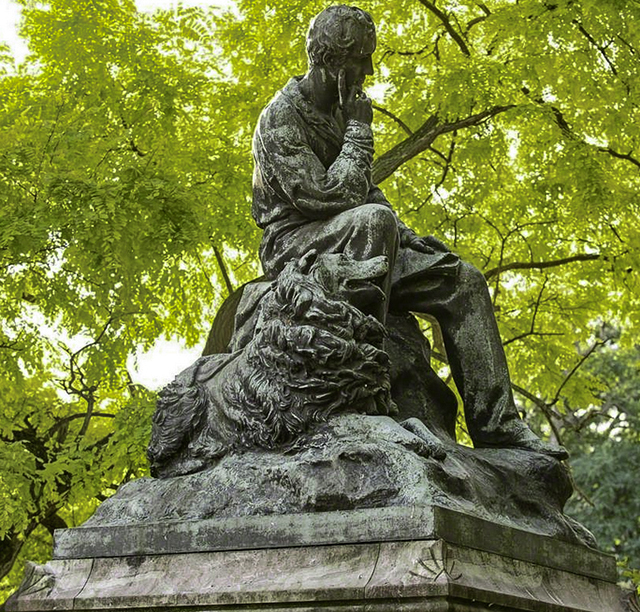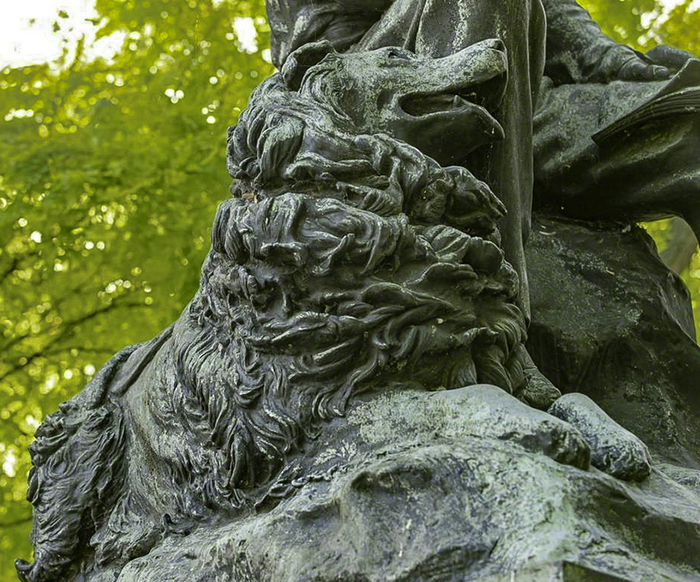 Lord Byron and Boatswain
Lord Byron and Boatswain (1881)
(bronze)
by
Richard Claude Belt
photo credit: Colleen Rowe Harvey / Art UK
Richard Claude Belt (1851 - 1920) was an English sculptor; many of his works were portrait sculptures, although he also created monument sculptures such as this statue of Lord Byron with his Newfoundland dog, Boatswain.
One of Belt's employees at the time claimed anonymously that he and another assistant, rather than Belt, was responsible for several of Belt's works, including this Byron statue; the claim was later made publicly by Belt's former employer. Belt filed a libel lawsuit against that employer, and that suit, after several appeals and a couple of years, ultimately was decided in Belt's favor, though his former employer immediately filed for bankruptcy to avoid having to pay the fine and court costs. Belt had even worse luck in another court case, in which he was found guilty of having fraudulently obtained money from a wealthy baronet (and justice of the peace and sherrif, not the kind of person you want to defraud) and sentenced to twelve years of hard labor.
This statue of Lord Byron is now on a traffic island in Park Lane, London, near the southeast corner of Hyde Park. You can see more images of this statute, from various angles, at the Art UK website. The website London Remembers, devoted to London's various monuments, notes that the granite base of this statue was contributed by the Greek government in 1882. Byron died in Greece, at the age of 36, of a fever he caught after sailing there to help the Greeks in their struggle against the occupying Turkish Ottoman Empire. He remains something of a national hero in Greece to this day.
You can read more about this statue here, at another website devoted to British monuments, where the dog is identified as "his faithful dog, perhaps a sheepdog, woolly and faithful...." I do not know if Belt (or his assistants) used a live model for the dog or modeled it from images or imagination, but it is certainly the case that many Newfoundlands in the 19th Century, especially in the earlier decades, had some or even a lot of curl in their coats, as the visual and literary records make clear.
If you happen to find yourself in London and wish to pay a visit to the statue, here's some waymarking information.
 photo credit: Colleen Rowe Harvey / Art UK
photo credit: Colleen Rowe Harvey / Art UK
Another monument to Boatswain, though of course without statuary, is the tomb at Newstead Abbey (Byron's home for a while), which is treated here at The Cultured Newf.


